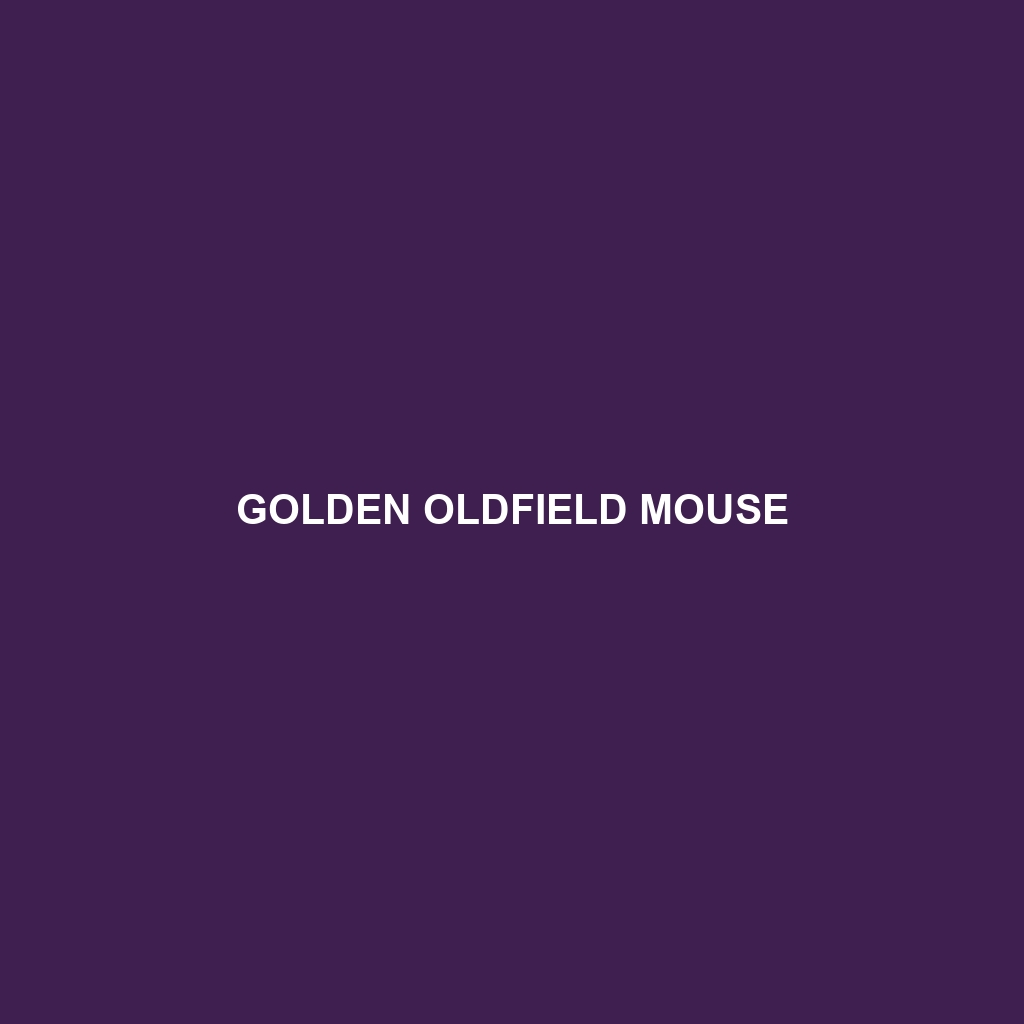Golden Oldfield Mouse
Common Name: Golden Oldfield Mouse
Scientific Name: Oligoryzomys fulvescens
Habitat
The Golden Oldfield Mouse primarily inhabits the grasslands and shrublands of Central and South America, particularly in regions such as Argentina, Paraguay, and parts of southern Brazil. These areas are characterized by their dry, open environments, which provide ample cover and foraging opportunities for this species.
Physical Characteristics
Golden Oldfield Mice are relatively small rodents, typically measuring between 9 to 12 cm in body length, not including their long, tufted tails. Their fur is predominantly golden to light brown, with a slightly paler underbelly. Notable features include large ears, sharp incisors, and a slender build, which enhances their agility in navigating through grasslands.
Behavior
This species is primarily nocturnal, exhibiting activities such as foraging and nesting during the night. Golden Oldfield Mice are known for their social behavior, often living in small family groups which help in protection against predators. Their ability to burrow and create nests in the grass provides shelter and safety.
Diet
The diet of the Golden Oldfield Mouse consists mainly of seeds, fruits, and vegetation. They are opportunistic feeders, and their feeding habits are highly adaptable, enabling them to thrive in varying environmental conditions. Their foraging activities contribute to seed dispersal, playing an essential role in their ecosystem.
Reproduction
The reproductive habits of Golden Oldfield Mice include a breeding season that peaks during the wetter months, facilitating the availability of food resources. Females typically give birth to litters of 3 to 5 offspring after a gestation period of about 25 days. The young are altricial, meaning they are born hairless and helpless, but they grow rapidly and begin foraging with their mothers shortly after weaning.
Conservation Status
Currently, the Golden Oldfield Mouse is classified as Least Concern according to the IUCN Red List. However, habitat loss due to agriculture and urban development poses potential risks to their populations, highlighting the need for habitat preservation efforts.
Interesting Facts
Golden Oldfield Mice have a unique adaptation; they can enter a state of torpor during extreme weather conditions, lowering their metabolic rate to conserve energy. Additionally, they communicate using a variety of vocalizations, from high-pitched squeaks to soft chirps, which help coordinate social interactions.
Role in Ecosystem
The Golden Oldfield Mouse plays a crucial role in its ecosystem as both a seed disperser and a prey species for various predators, including birds of prey and snakes. Their burrowing activities help aerate the soil, contributing to the health of their grassland habitats. As such, they are integral to the biodiversity and ecological balance of their environment.
